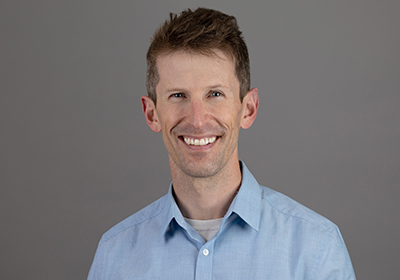Enrollment is complete. The trial is no longer accepting new study participants.
Osteoarthritis is one of the leading causes of chronic knee pain, affecting at least 19% of Americans aged 45 or older and as many as 50%
of those in their 80s, according to Dan Cushman, M.D., an associate professor of sports medicine in the Department of Physical Medicine & Rehabilitation at the Spencer Fox Eccles School of Medicine at the University of Utah.
Exercise, physical therapy, and weight loss can help relieve the symptoms. Cortisone injections are one of the most effective temporary drug treatments for the condition but can have serious side effects such as cartilage damage, high blood pressure, and increased blood sugar levels.
But in the future, cortisone might be used less often to treat knee osteoarthritis, says Cushman, who is recruiting volunteers for a study of a low-cost version of another promising treatment.
Platelet-rich plasma (PRP) is a type of regenerative medicine that relies on injections of a patient’s own platelets to relieve knee joint stiffness and pain. Platelets are blood cells that help form clots. But they also contain proteins called growth factors that can help heal injuries and relieve pain. Because the platelets are derived from a patient’s own blood, there is likely a lower risk of adverse side effects, Cushman says.
Studies suggest that PRP is just as effective as cortisone injections, and its effects last longer, potentially requiring new injections every six months compared to every two to three months for cortisone.
But there’s a catch. Most doctors must rely on commercial PRP kits to extract platelet-rich plasma from a patient’s blood. Few insurance companies cover the procedure, and physicians often charge more than $700 for each injection, making it cost-prohibitive for many patients.
In an effort to address this problem, Cushman and his colleagues have developed a low-cost, easy-to-replicate PRP preparation technique that physicians can do in their own offices.
“Our process is basically the same as the commercial ones, but we do it manually using a centrifuge and a few readily available, inexpensive supplies to separate plasma and platelets from other blood components,” Cushman says. “We extract just as much PRP from the blood, and it only takes a couple of minutes more to do than with the commercial kits.”
The simplified process could reduce the cost of PRP injections substantially, perhaps as low as $10 per shot, making it more enticing for insurance companies to cover the procedure, Cushman says.
To test its viability, Cushman is recruiting 30 volunteers with mild to moderate knee osteoarthritis to participate in a small-scale trial. Volunteers will receive two PRP injections, one at the beginning of the study and another three weeks later. The injections will be free of charge.
Participants will be followed for one year after the second injection and asked to fill out questionnaires at regular intervals about their levels of activity and discomfort.
The study is supported by the Foundation for Physical Medical and Rehabilitation and the Department of Physical Medicine & Rehabilitation at University of Utah.
“Our ultimate goal is to identify treatment options for painful musculoskeletal conditions for all patients, not just those who can afford it without insurance coverage,” Cushman says. “This study will hopefully show that a relatively simple procedure can provide long-lasting, lower-risk treatment without the need for medications.”
Photo: Dan Cushman, MD

